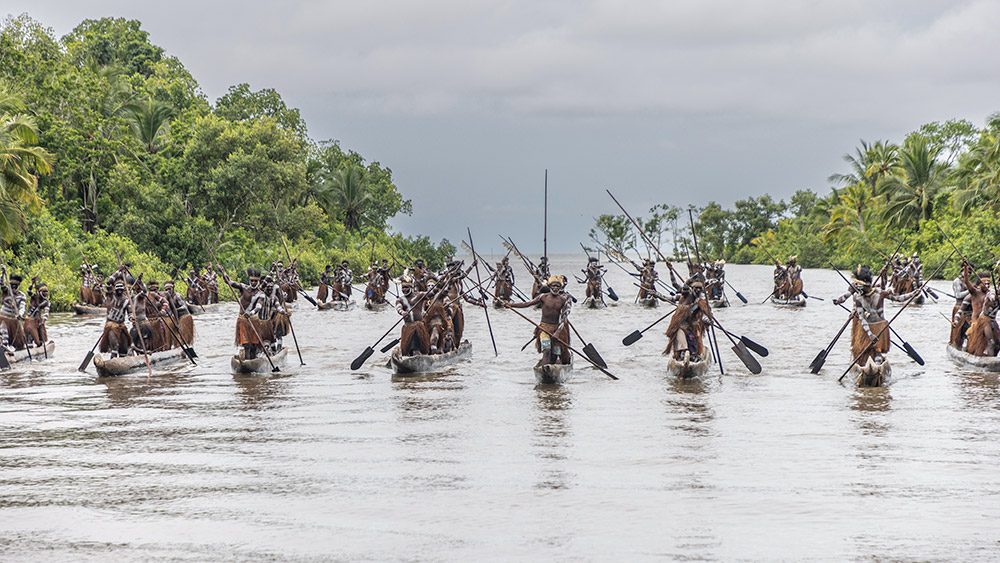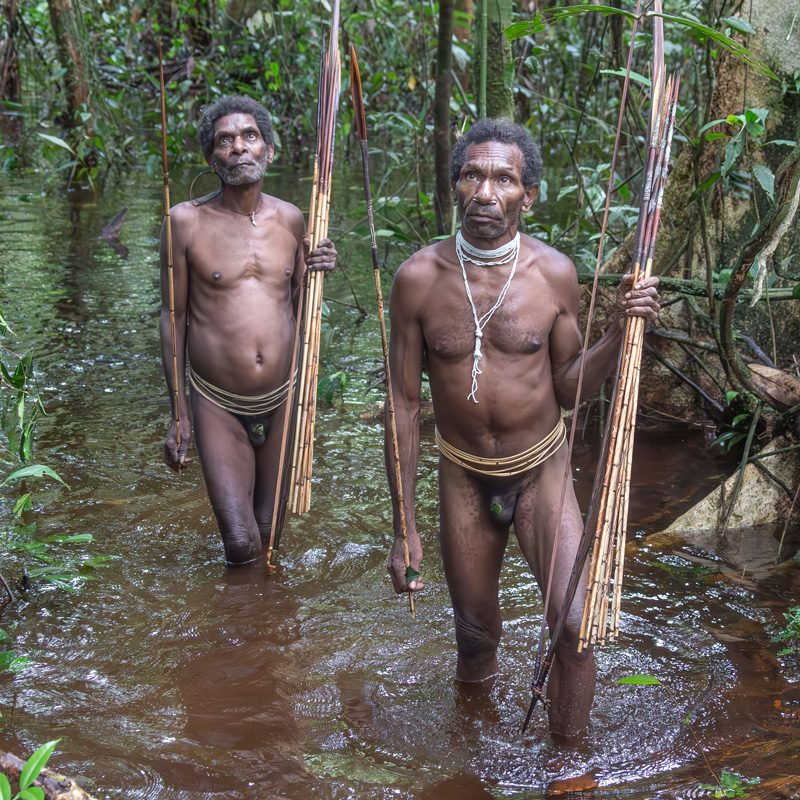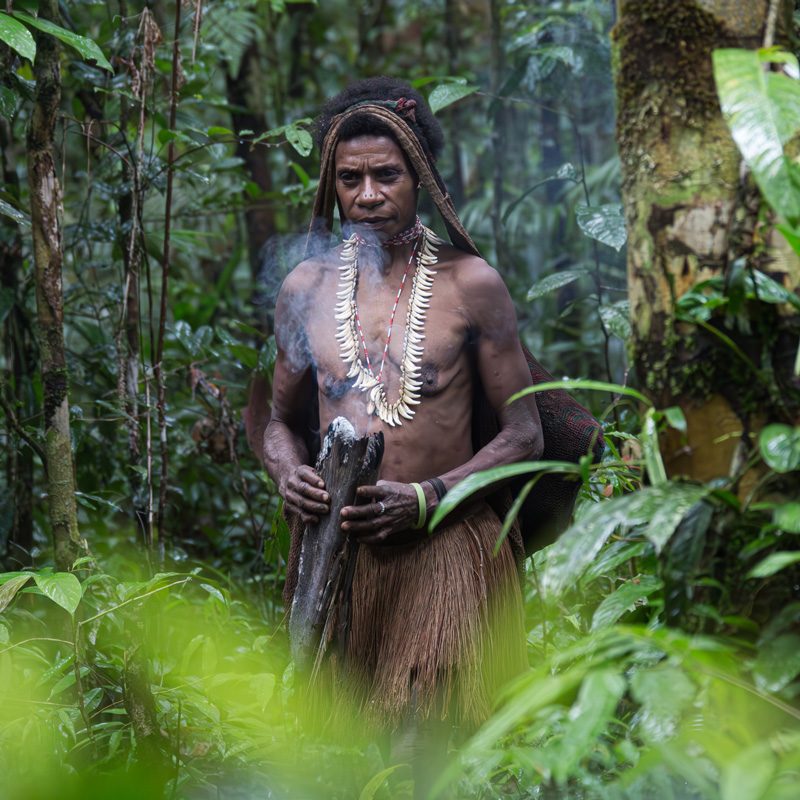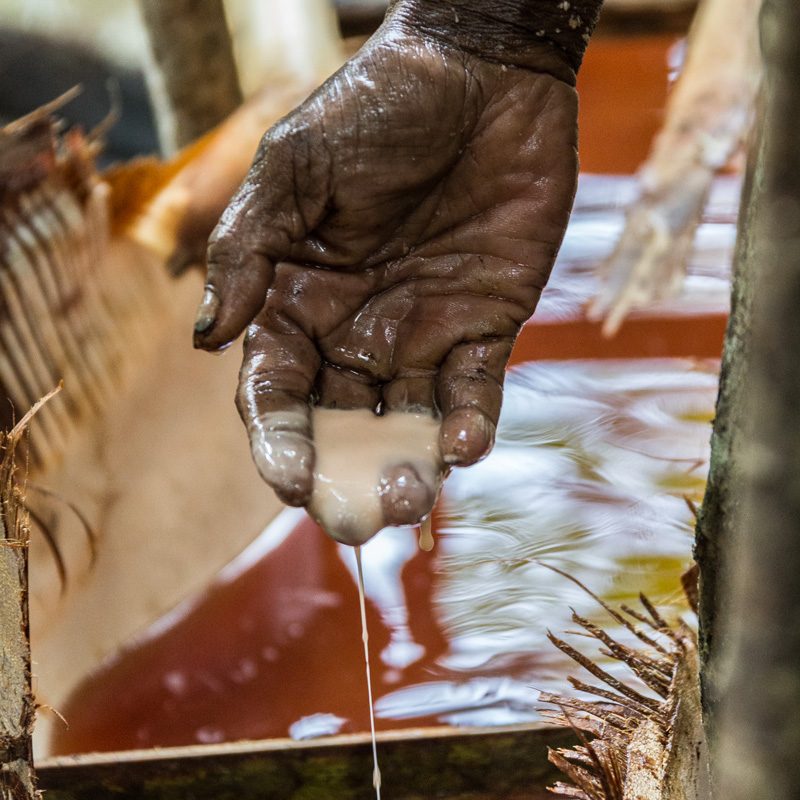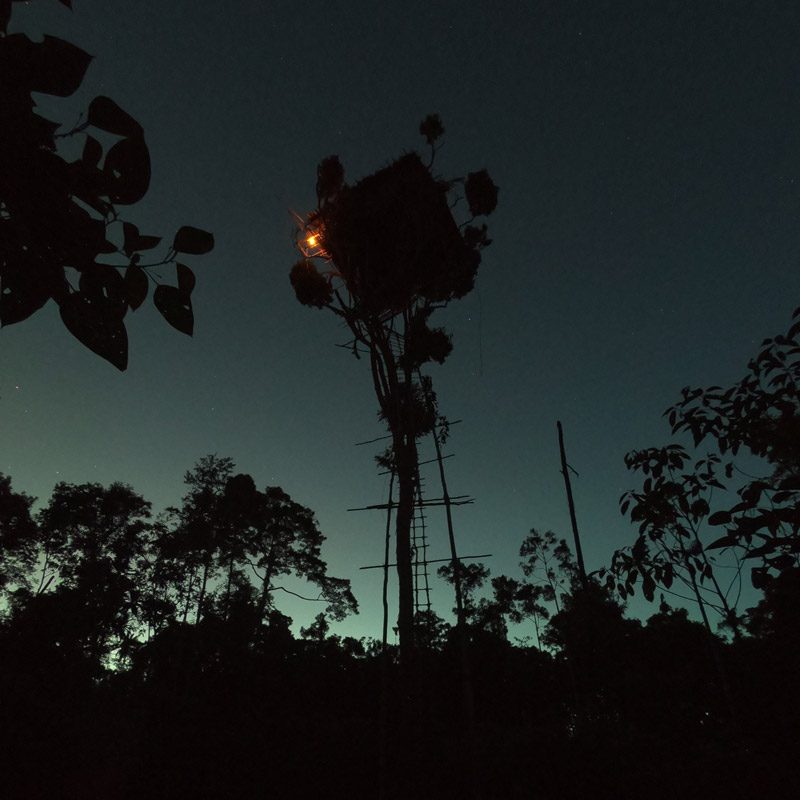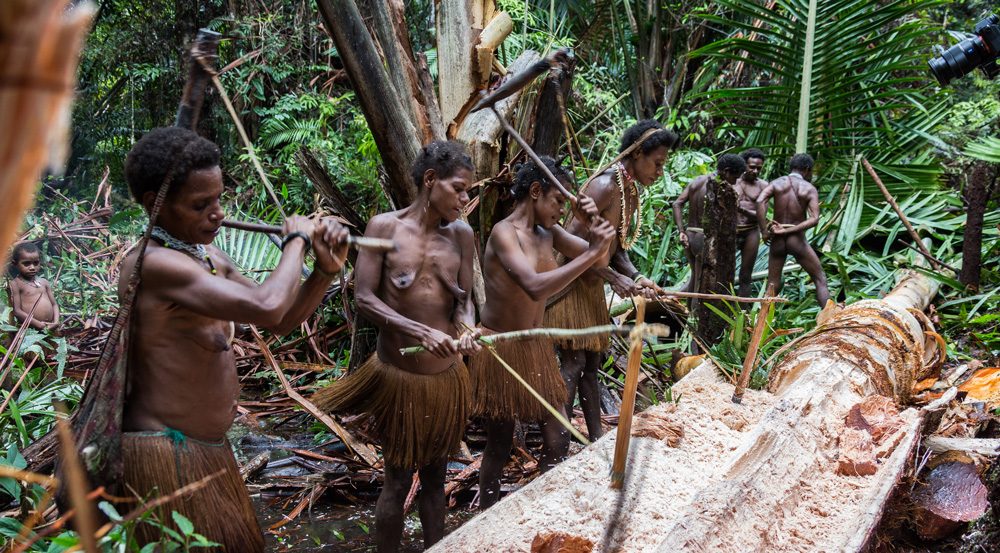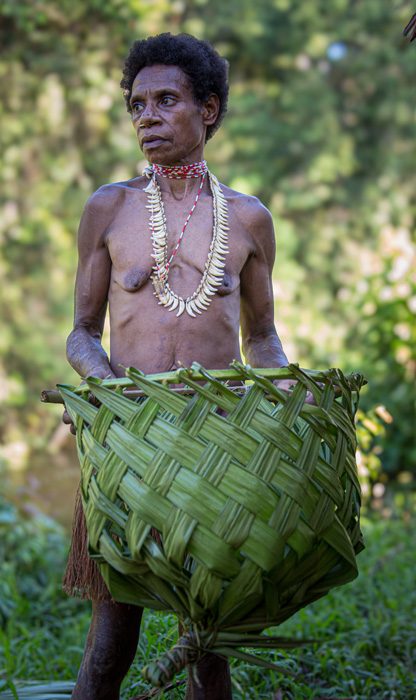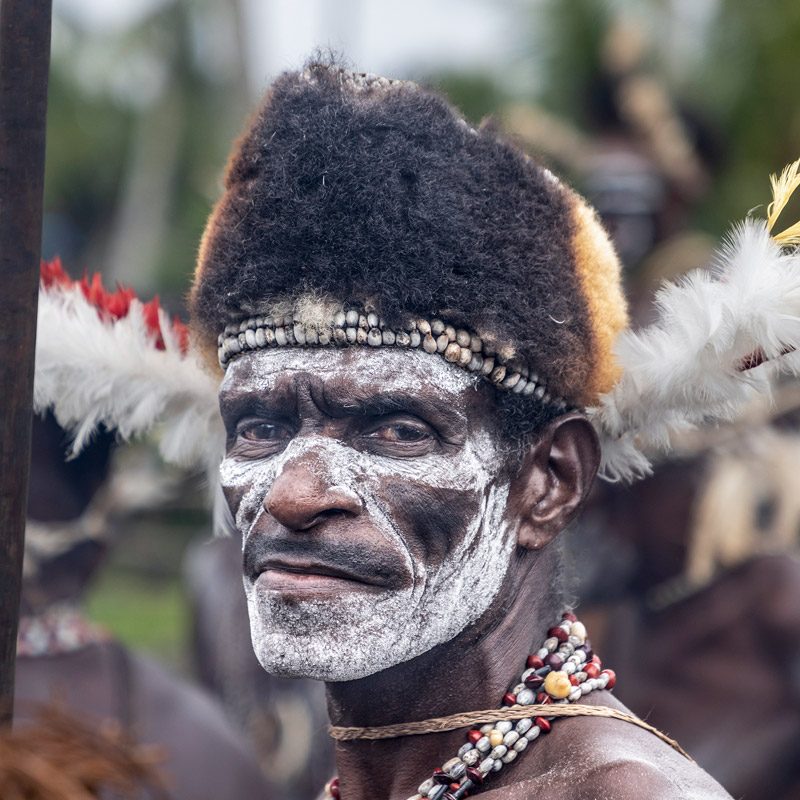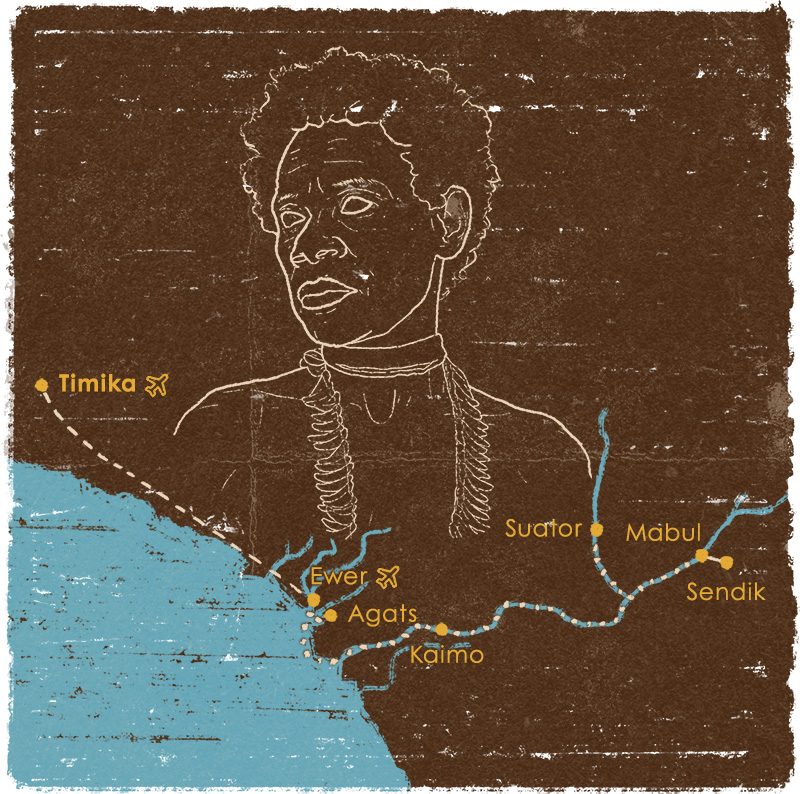Discover the highlights of this tribal trip to West Papua
We will meet the Korowai people
The Korowai people are a primarily hunter-gatherer ethnic group. Sago palm flour is a fundamental part of their diet. Currently, it is believed that this ethnic group is made up of about 3,000 individuals, of whom only 150 already live inside the jungle. They are distributed in patrilineal clans, and marriages, in which the man has to pay a dowry to the woman's family after her first menstruation, are exogamous and polygamous.
Cannibalism stopped being practiced a couple of decades ago. When members of different clans attacked each other, the defeated were devoured by the victors as a way of imbibing the power and prestige of the rival. Furthermore, periodically, the wisest men in the group perform certain rituals in honor of a creator god in which delicacies made with sago and animistic spells are combined with animal sacrifices.
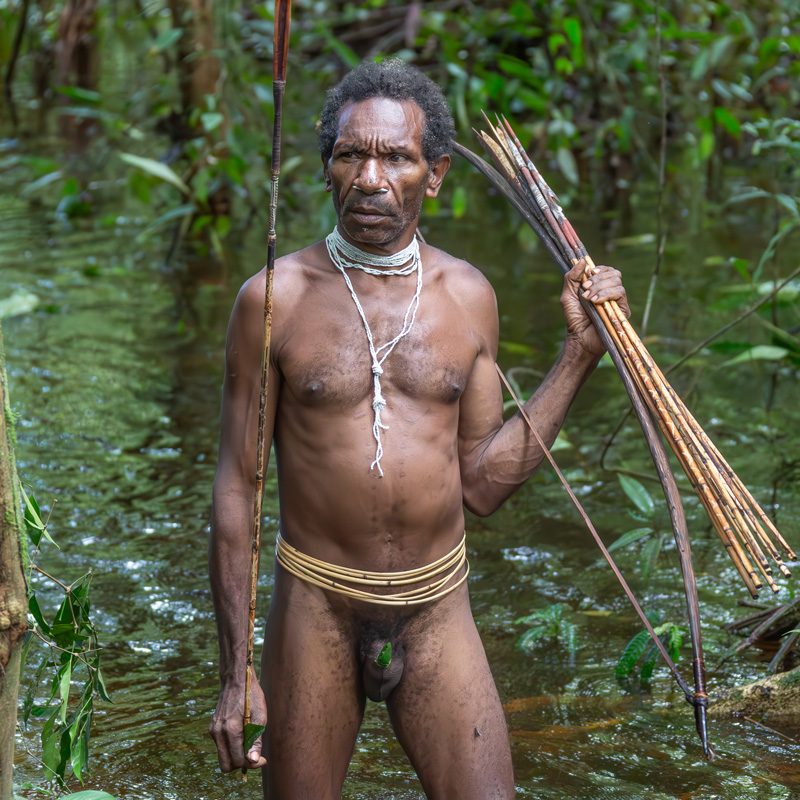

We will visit the majestic tree houses of the Korowai people
During this tribal trip to West Papua we will have the privilege of visiting the legendary tree houses of the Korowai culture. These constructions rise up to 30 meters above the ground, using tall and robust banyan trees as their central axis. At the top is the house, which has a suspended floor made of branches and sticks and a roof made up of carefully intertwined leaves. The central structure and the door are made of branches fixed with rattan. Along the trunk of the tree, there is a fixed ladder that is erected with steps of the same material.The reasons why the Korowai people build these homes at such a high altitude are the following: it offers protection against floods; it is easy to evacuate smoke when cooking; it allows you to keep your distance from dangerous animals (wild boars, snakes or disease-carrying insects); and it provides sighting and defense capabilities against enemies from other tribal groups.
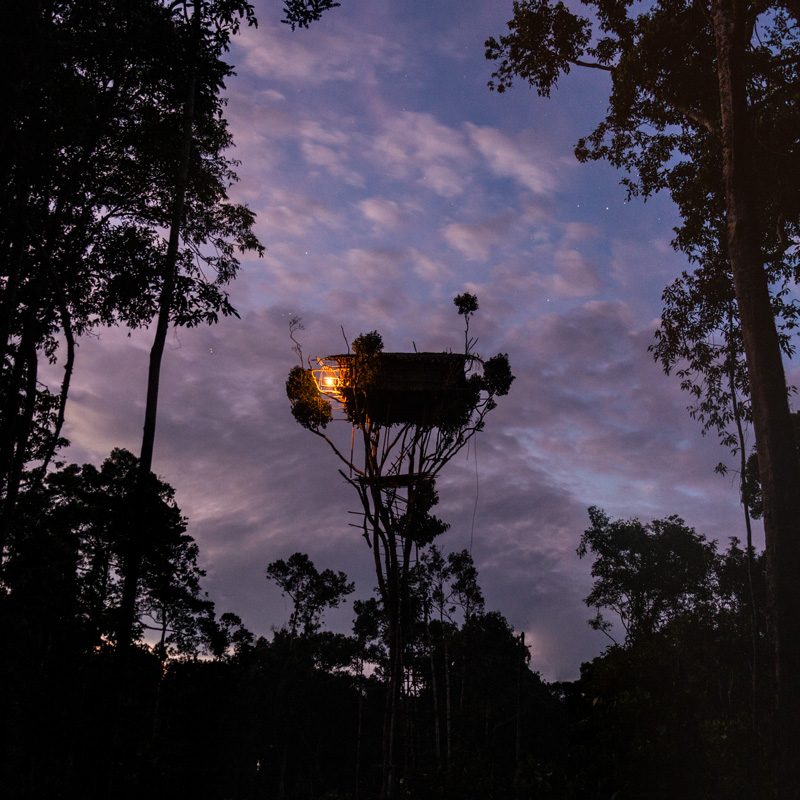

We will accompany the Korowai to fish
It will be a good opportunity to understand the daily habits of the locals. We will go with them to a nearby river. The Korowai use a kind of root for fishing, which is crushed and dipped in water. This hook is poisonous to fish and other aquatic creatures. Another Korowai fishing technique is to block two sections of a small river and dry it up. Fish and other aquatic creatures will be a great reward for teamwork. We will get muddy and dirty and catch fish or frogs with our own hands. Children and old people will come to the river to fish. After such hard work, the locals will cook today's catch: fish, frogs or worms will be cooked on the fire. Together with the sago ball, such catches are eaten with great joy. The Korowai cook without spices; if they have a little salt, it will be the only ingredient that brings some flavor to the food.
We will visit the Asmat tribe
During this tribal trip to West Papua, we will share a full day filled with emotions and vibrant moments together with an Asmat community. We will begin by witnessing a spectacular demonstration of the arrival ceremony that the Asmat warriors used to perform when returning from battle. We will observe how the fighters would return, glorious and victorious, riding in boats and dressed in their war attire and body paint. Once the warriors reached dry land, they were welcomed by the rest of the community. We will see how women, elders, and children greeted them through endless dances, showing their gratitude for the bravery displayed on the battlefield. After this impressive moment which will give us goosebumps, we will witness the ceremony of raising the sacred totem in honor of the ancestors. Also, we will also have the opportunity to meet with the men of the community, engage in conversation with them, and ask about their experiences today and their culture. We will dedicate part of the day to walk around this small village, visit the craft shop, and do some shopping if we wish. Also, we will also visit their museum, a building that houses much of the history and culture of this community. Here, we will see displayed pieces that will surprise us, but we don’t want to spoil anything so you can experience the surprise for yourselves once we are there.
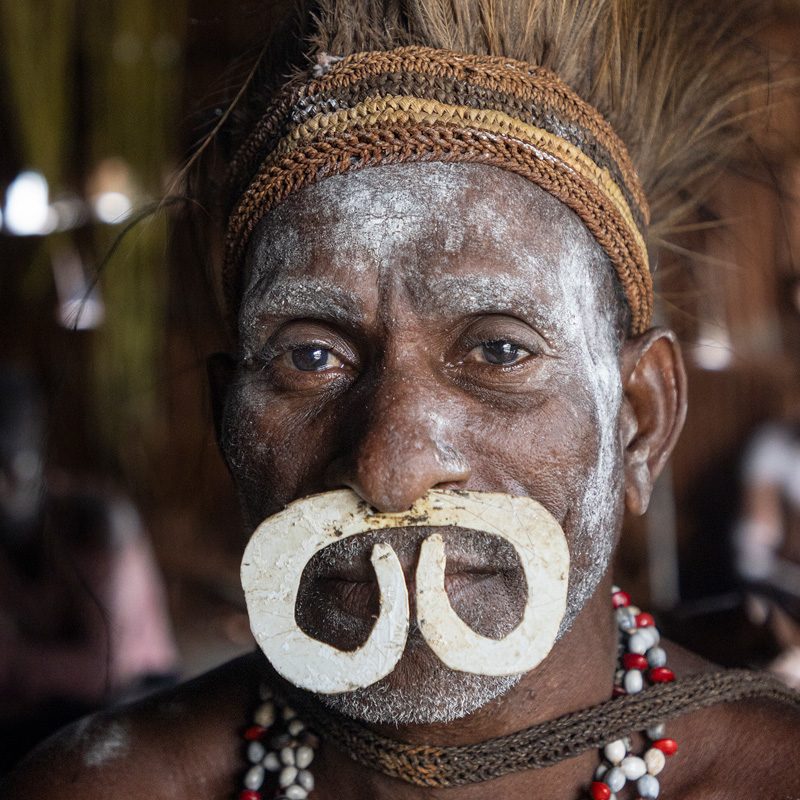
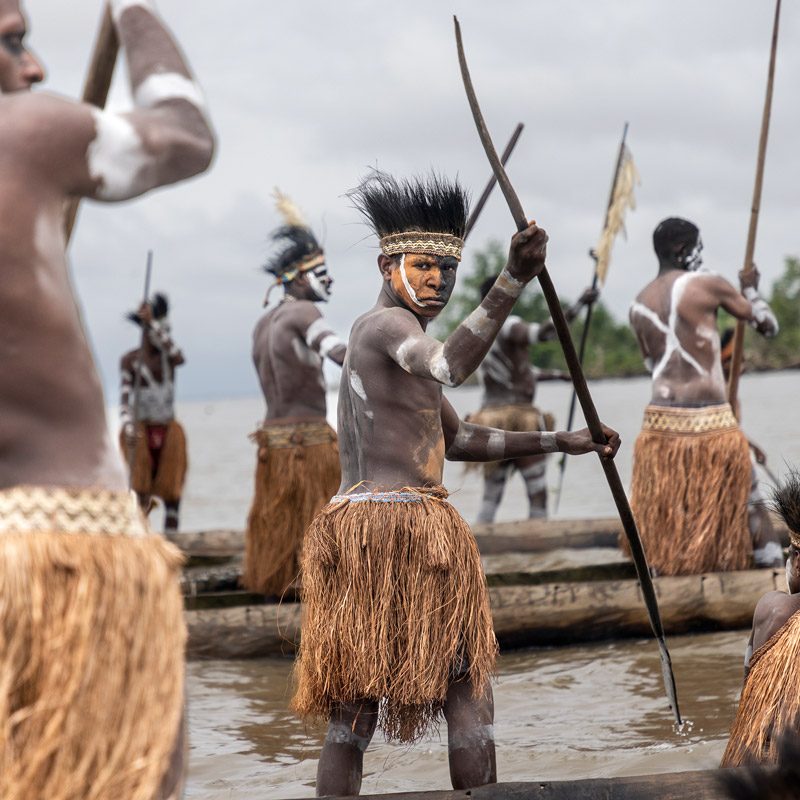
© Photos by Aníbal Bueno taken during a tribal trip to West Papua (Indonesia).
► Download the itinerary for this tribal trip to West Papua
Click the button below to easily access the download form for this tribal trip itinerary to West Papua.
